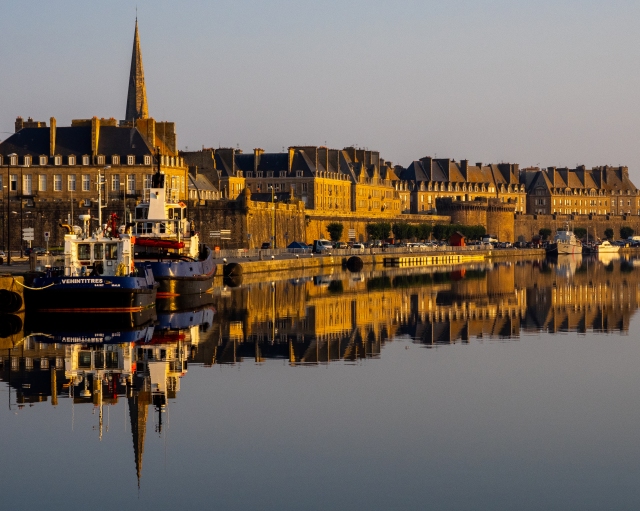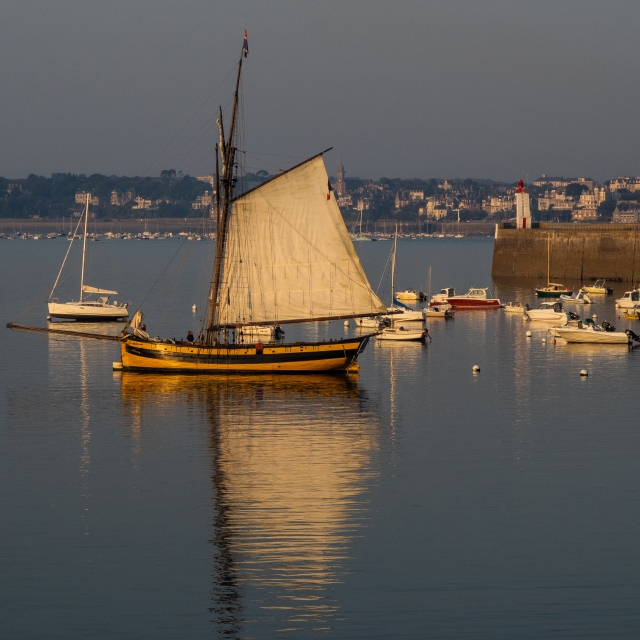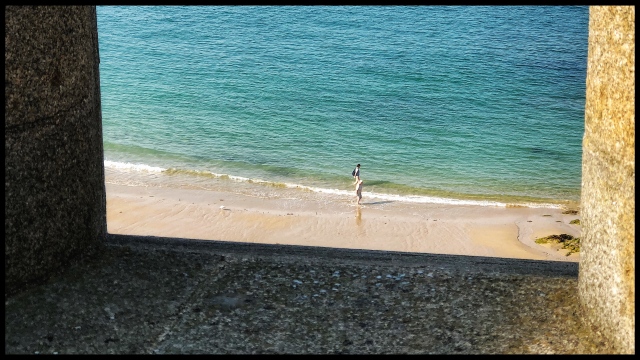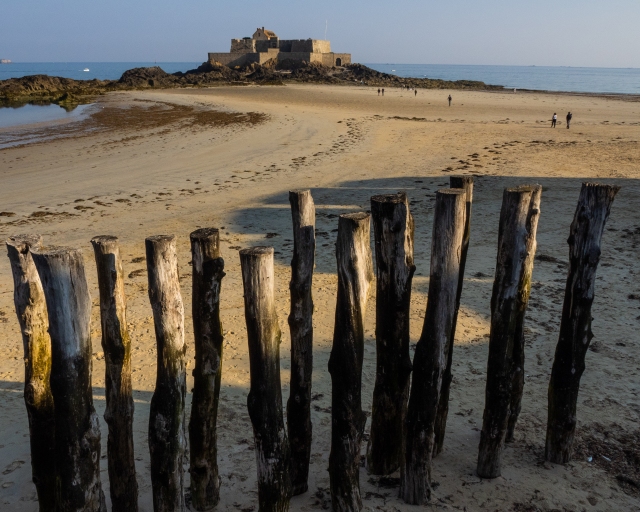
We finally made it to St. Malo. I say “finally” because it’s always loomed large-ish in my imagination. First, there’s the name. “Malo” is one of those evocative Dark Ages names no one has given their child in several centuries, like “Zeno.” I love those names.
Then there’s the city’s history of state-supported piracy by the Corsairs, who inspired Lord Byron and were romanticized in a 19th century ballet. Enormous wealth was created in St. Malo by the legal piracy, along with legitimate trade, and you can see it in the sturdy bourgeois homes that give the city its architectural character. It’s the setting for Anthony Doerr’s Pulitzer Prize awardee “All the Light We Cannot See,” which describes the rows of tall, grey buildings and the ever-present briny smell of the English Channel.
In the novel, St. Malo is blustery and wet. The Channel’s own reputation is of a dark, turbulent sea under threatening clouds, impossible to cross without a bout of seasickness. However, we were there on a sparkling sunny day of the kind you experience on the French Riviera. If we’d had time for a ferry ride to one of the English Channel Islands, it would have been a rare breeze of a sail.

Alas, not this time. But St. Malo was a stunning experience in itself. They don’t call this part of Brittany the Emerald Coast for nothing.

We walked the entire ramparts around the city, and then wandered “intra-muros” or the city within the walls. It’s a tourist town. Those striped mariner tops are for sale in every shop, along with corsair trinkets. If you haven’t read the Doerr novel or been acquainted with St. Malo’s history, you might be disappointed once you leave the magic of the rampart walls, but we were still enthralled. To think that those tall houses were re-built after virtually all them were bombed to bits during the last year of WWII.
At low tide, you can walk to several small rocky islands, some with old forts standing guard. We, however, stayed close enough to shore.

These logs are submerged at high tide.

It was too beautiful a day to head home to Rennes after we were done exploring St. Malo, so we made the short drive to neighboring Cancale, the town of oysters. The port area was crowded with oyster bars and people sipping Muscadet and shucking shells on the quai. We strolled the trail along the water, which wends around the cape if you are inclined for a day hike. It had gotten hot, so we lingered with others at town’s edge with our feet cooling off in the water, like this couple, before heading out.

On our way home through late summer haze, we spotted the outline of Mont St. Michel in the distance, a site we will have to see on another day.

Loving your commentary, Kathleen. You should think about doing photo travelogues, reading your commentaries/photos:STUNNING! Only thing is, surely you didn’t depart from St.Malo without an oyster, Muscadet tasting, did you? LOL
I don’t like oysters!
St-Malo is known to Canadian schoolchildren as the home port of Jacques Cartier, 16th c explorer who charted the St Lawrence river and who visited First Nations villages where Montréal and Québec City now stand. I have never been there but it is on my list!
Yes, we saw the Jacques Cartier statue there. And fyi, our house in Rennes is off the rue Jacques Cartier.
Nice.
>
Kathleen, you are right and it is absolutely stunning as are your photos!!